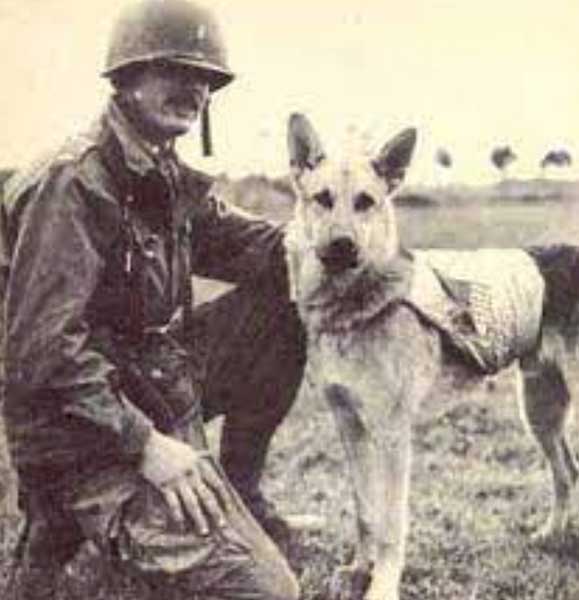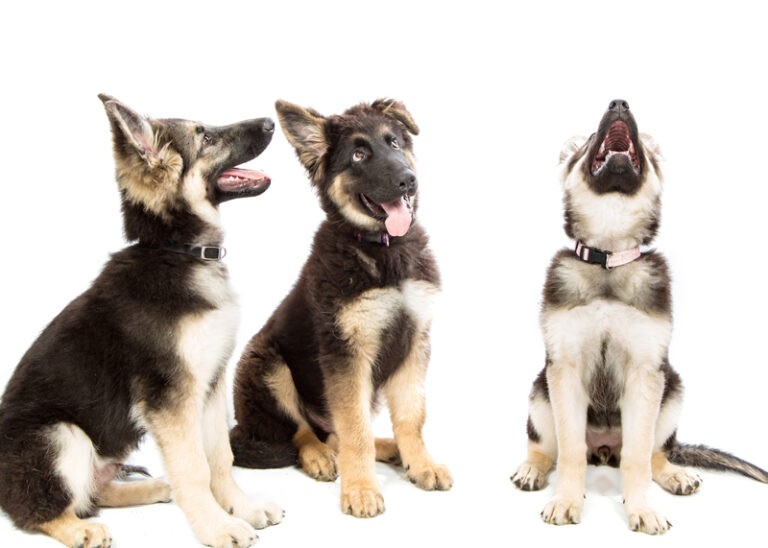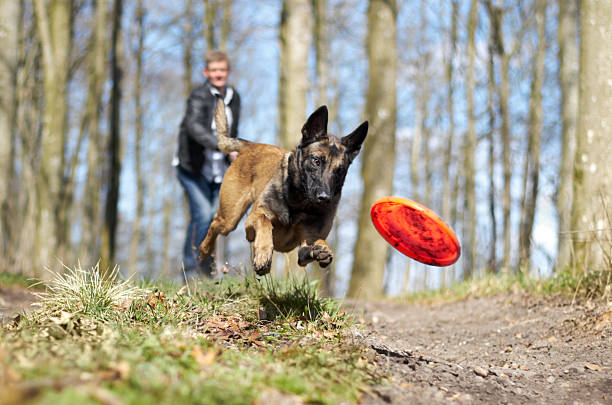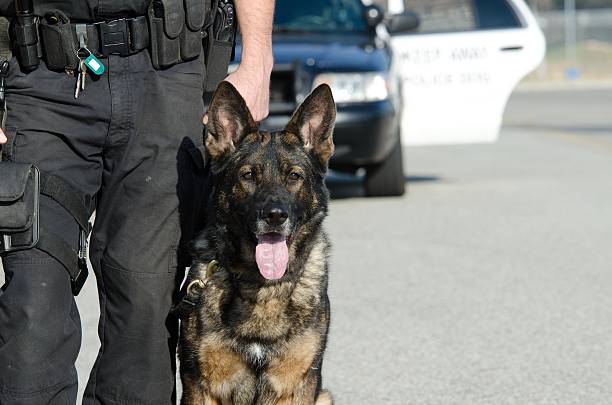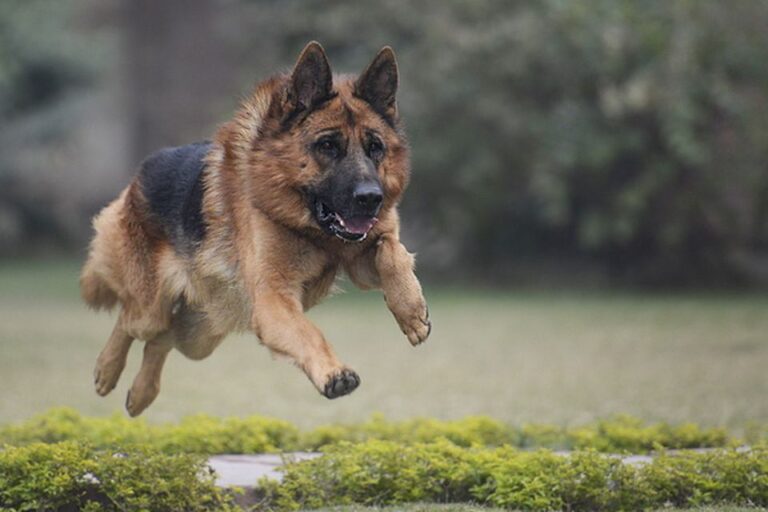Unveiling the Origin: The Fascinating History of German Shepherd Breed
The German Shepherd: A Breed Steeped in History
Are you fascinated by the German Shepherd breed? Understanding the origin and history of German Shepherds can deepen your appreciation for these remarkable dogs. Let’s explore the journey of this breed from its early beginnings to its present-day prominence.
Introduction to the German Shepherd Breed
The German Shepherd, also known as the Alsatian, is a breed renowned for its intelligence, loyalty, and versatility. These dogs have a distinctive appearance, with their strong, muscular bodies, upright ears, and alert expressions. German Shepherds are renowned for their exceptional working abilities and have excelled in various roles, including as police dogs, service dogs, search and rescue dogs, and as beloved companions.
Unraveling the Origin and History of German Shepherds
The origins of the German Shepherd breed can be traced back to Germany in the late 19th century. The breed’s development was driven by the need for a capable and versatile herding dog that could excel in various working tasks. The pioneering figure behind the breed’s creation was Captain Max von Stephanitz.
Early Beginnings in Germany
In the late 1800s, Captain Max von Stephanitz, a German cavalry officer, began his quest to develop the ideal herding dog. He sought to create a breed that possessed not only superior herding skills but also intelligence, strength, and unwavering loyalty. Captain von Stephanitz believed that the physical and mental qualities of working dogs were of utmost importance.
Development of the Breed Standard
Captain von Stephanitz’s vision for the German Shepherd breed led to the formation of the Verein für Deutsche Schäferhunde (SV) in 1899, which served as the breed’s governing body. Under his guidance, a breed standard was established, defining the physical characteristics, temperament, and working abilities of German Shepherds. This standard continues to serve as a benchmark for breeding and evaluating German Shepherds worldwide.
As the breed gained recognition and popularity, German Shepherds soon caught the attention of the international community. Their exceptional qualities and versatility led to their deployment in various roles, including during both World Wars.
Understanding the origin and history of German Shepherds provides valuable insights into the breed’s purposeful development and the dedication of individuals like Captain Max von Stephanitz. The German Shepherd breed continues to leave a lasting impact with its versatility, intelligence, and unwavering loyalty.
Origins of the German Shepherd Breed
The German Shepherd breed has a rich and fascinating history that traces back to its early beginnings in Germany. This section will explore the origins of the German Shepherd breed and the development of its breed standard.
Early Beginnings in Germany
The German Shepherd breed originated in Germany in the late 19th century. The goal was to develop a versatile working dog that could excel in various tasks such as herding, guarding, and police work. The breeding programs focused on selecting dogs with exceptional intelligence, agility, and loyalty.
One of the key figures in the development of the German Shepherd breed was a cavalry officer named Captain Max von Stephanitz. He recognized the need for a standardized breed and worked towards creating a dog that possessed the ideal characteristics required for herding and guarding.
Development of the Breed Standard
In 1899, Captain Max von Stephanitz established the Verein für Deutsche Schäferhunde (SV), the first German Shepherd Dog Club. He played a pivotal role in defining the breed standard, a set of guidelines that describe the ideal physical and temperament traits of the German Shepherd.
The breed standard outlines specific characteristics such as the dog’s size, proportions, coat color, and temperament. It serves as a reference for breeders and judges to evaluate and maintain the integrity of the German Shepherd breed. The German Shepherd breed standard has evolved over time, with adjustments made to reflect the breed’s changing roles and requirements.
By focusing on specific traits and carefully selecting breeding pairs, the German Shepherd breed standard has played a crucial role in maintaining the breed’s consistency and quality. Today, German Shepherds are renowned for their intelligence, versatility, and loyalty, making them highly sought after as working dogs, family companions, and therapy dogs.
Understanding the early beginnings of the German Shepherd breed and the development of its breed standard gives us insight into the breed’s purposeful creation and the characteristics that define them. The German Shepherd breed continues to be celebrated for its exceptional abilities and continues to be an enduring favorite among dog lovers worldwide.
Captain Max von Stephanitz: The Father of the German Shepherd
The German Shepherd breed owes its existence and standardization to the visionary efforts of Captain Max von Stephanitz. His deep appreciation for the qualities of a versatile working dog led to the development of the German Shepherd breed as we know it today.
The Role of Captain Max von Stephanitz
Captain Max von Stephanitz, a former cavalry officer, recognized the need for a reliable and versatile herding dog in the late 19th century. He sought to create a breed that possessed not only exceptional herding abilities but also intelligence, loyalty, and a strong work ethic.
Captain von Stephanitz observed a dog named Hektor Linksrhein during a dog show and was impressed by its exceptional working qualities. Recognizing the potential of this dog, he purchased Hektor and renamed him Horand von Grafrath, laying the foundation for the German Shepherd breed.
Formation of the Verein für Deutsche Schäferhunde (SV)
In 1899, Captain von Stephanitz founded the Verein für Deutsche Schäferhunde (SV), which translates to the Society for the German Shepherd Dog. The SV was established with the aim of ensuring the breed’s development, preservation, and promotion.
Under Captain von Stephanitz’s guidance, the SV set breed standards, conducted selective breeding programs, and established rigorous performance tests to assess the working capabilities of German Shepherds. These measures were instrumental in maintaining the breed’s working abilities and overall quality.
The SV’s dedication to preserving the breed’s integrity and maintaining its working capabilities contributed significantly to the German Shepherd’s rise to prominence and recognition as a versatile working dog.
Captain Max von Stephanitz’s vision and leadership set the foundation for the German Shepherd breed’s success and enduring legacy. Today, the German Shepherd remains one of the most popular and respected dog breeds worldwide.
In the next section, we will explore the role of German Shepherds during World War I and World War II. Stay tuned to learn about their invaluable contributions in times of conflict.
German Shepherds in the World Wars
During both World War I and World War II, German Shepherds played significant roles in various capacities. Their exceptional intelligence, trainability, and loyalty made them invaluable assets in wartime efforts.
German Shepherds in World War I
In World War I, German Shepherds were employed by various military and civilian organizations. They were used as messenger dogs, carrying important messages across the battlefield. Due to their keen senses and agility, they were able to navigate challenging terrains and deliver messages swiftly and accurately.
German Shepherds also served as sentry dogs, guarding military installations and alerting soldiers to approaching enemies. Their acute hearing and strong protective instincts made them highly effective in detecting intruders and potential threats.
German Shepherds in World War II
The role of German Shepherds expanded further during World War II. They were extensively utilized by military forces for various purposes. German Shepherds served as messenger dogs, search and rescue dogs, and sentry dogs, just as they did in World War I.
One of the most notable roles German Shepherds played in World War II was as scout dogs. These dogs accompanied soldiers on reconnaissance missions, using their exceptional sense of smell to detect enemies, landmines, and hidden traps. Their ability to alert soldiers to potential dangers saved many lives and helped ensure the success of military operations.
Apart from their roles in the military, German Shepherds also served as therapy dogs, providing comfort and companionship to wounded soldiers. Their gentle and empathetic nature made them ideal for providing emotional support to those who had experienced the traumas of war.
The contributions made by German Shepherds during the World Wars solidified their reputation as intelligent, versatile, and dependable working dogs. Their exceptional skills and unwavering loyalty continue to be recognized and valued in various fields today, including as police, service, and therapy dogs.
Note: German Shepherds’ involvement in the World Wars is a testament to their capabilities, but it’s important to acknowledge that dogs, including German Shepherds, were also affected by the hardships and dangers of war. Many of them lost their lives or suffered injuries while serving alongside humans.
Rise to Popularity and Recognition
As German Shepherds continued to captivate the hearts of dog enthusiasts, they began to gain popularity and recognition in various fields. Two notable areas where German Shepherds made a significant impact are Hollywood and their role as police and service dogs.
German Shepherds in Hollywood
German Shepherds have long been a favorite breed in the entertainment industry. Their striking appearance, intelligence, and trainability make them ideal for various roles in movies, television shows, and commercials. German Shepherds have graced the silver screen in iconic films such as “Rin Tin Tin” and “Strongheart,” capturing the hearts of audiences worldwide.
Their versatility allows them to portray a wide range of characters, from loyal companions to heroic search and rescue dogs. German Shepherds’ ability to perform complex tasks and follow cues from trainers has made them a favorite choice among filmmakers. Their on-screen presence has helped to solidify their reputation as a breed of exceptional intelligence and capability.
German Shepherds as Police and Service Dogs
German Shepherds have a long-standing history as working dogs, particularly in the field of law enforcement. Their natural instincts, intelligence, and physical prowess make them well-suited for police work. German Shepherds have been utilized as police dogs for tasks such as tracking, search and rescue, drug detection, and apprehension.
Their keen sense of smell, acute hearing, and remarkable agility enable them to excel in these demanding roles. German Shepherds work closely with their human handlers, forming strong partnerships built on trust and mutual respect. These dogs undergo rigorous training to develop their skills and ensure they can perform their duties effectively and safely.
In addition to their role in law enforcement, German Shepherds also serve as service dogs for individuals with disabilities. Their intelligence, loyalty, and ability to learn complex tasks make them valuable companions and assistants for people with various needs. German Shepherds can be trained to perform tasks such as guiding the visually impaired, detecting medical conditions, and providing emotional support.
German Shepherds’ exceptional working abilities and their unwavering dedication to their tasks have made them an integral part of the police and service dog community. Their presence in these fields further highlights their intelligence, versatility, and remarkable capabilities.
The rise of German Shepherds in Hollywood and their invaluable contributions as police and service dogs have solidified their position as one of the most recognized and respected breeds in the world. Their continued popularity and remarkable abilities showcase the exceptional nature of this breed.
The German Shepherd Today
As we look at the German Shepherd breed today, it’s evident that they have maintained their versatility and adaptability, making them one of the most popular dog breeds worldwide.
Versatility and Adaptability
German Shepherds are renowned for their versatility in various roles and environments. Their intelligence, trainability, and athleticism make them well-suited for a wide range of tasks.
One notable area where German Shepherds excel is in working roles. They are highly valued as police, service, and therapy dogs, thanks to their exceptional scenting abilities, strength, and loyalty. Their natural protective instincts combined with proper training make them excellent protectors and guardians.
Furthermore, German Shepherds have also made their mark in competitive sports such as obedience, agility, and competitive dog sports. Their intelligence, athleticism, and eagerness to please their owners make them a top choice for dog sport enthusiasts.
In addition to their working and sporting capabilities, German Shepherds also make wonderful family pets. They are known for their loyalty, affection, and unique intelligence. With proper socialization and training, they can adapt well to various living situations, including apartments, as long as their exercise and mental stimulation needs are met.
Continuing Legacy and Popularity
German Shepherds continue to be a popular breed worldwide due to their remarkable qualities. Their intelligence, loyalty, and versatility have captured the hearts of many dog enthusiasts.
Their popularity is evident in various events and competitions specifically dedicated to the breed, where German Shepherd owners and enthusiasts come together to celebrate their beloved dogs. These events showcase the breed’s exceptional skills and abilities, further highlighting their continued legacy.
If you’re considering adding a German Shepherd to your family, it’s important to understand their specific needs and requirements. From grooming tips to nutrition and exercise routines, being well-prepared will ensure a happy and healthy life for your German Shepherd companion.
German Shepherds have also found themselves in need of rescue and adoption. If you are considering adopting a German Shepherd, it’s essential to learn about the rescue and adoption process and the responsibilities that come with it.
In conclusion, the German Shepherd breed continues to thrive, maintaining its versatility, adaptability, and popularity. Whether they are serving as working dogs, participating in sports, or bringing joy as family pets, German Shepherds leave an indelible mark on the lives of those who appreciate their remarkable qualities.
